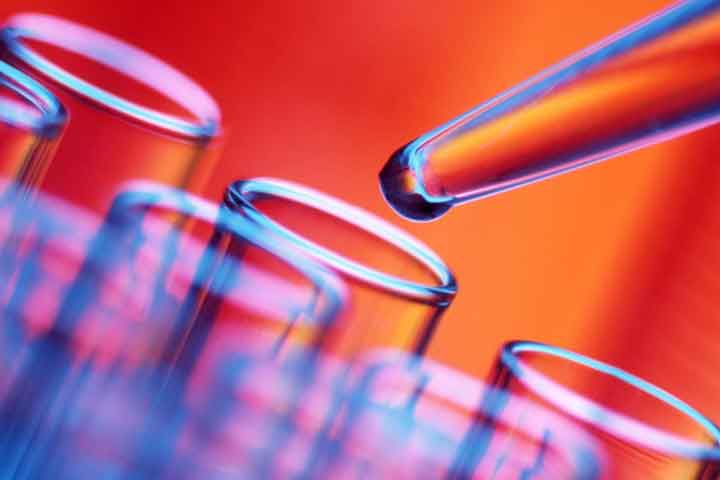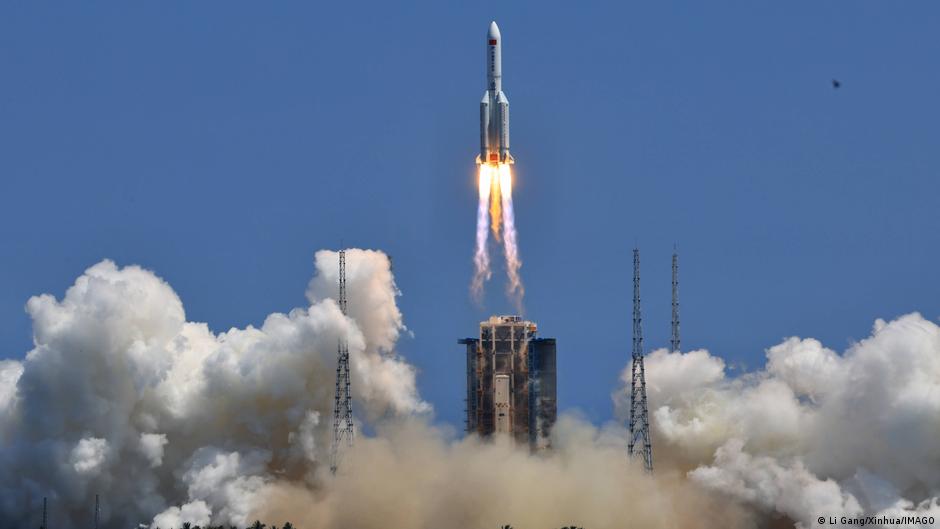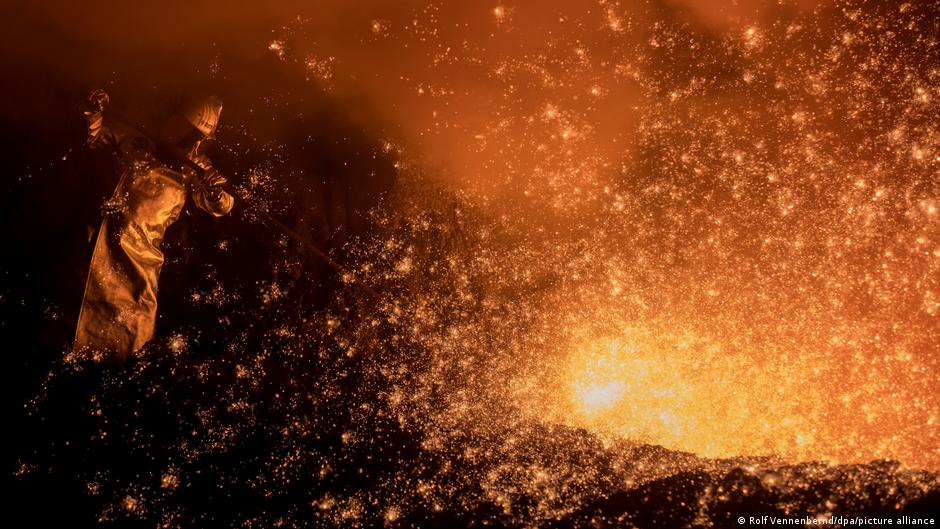Deep inside Earth is a solid metal ball that rotates independently of our spinning planet, like a top whirling around inside a bigger top, shrouded in mystery.
This inner core has intrigued researchers since its discovery by Danish seismologist Inge Lehmann in 1936, and how it moves — its rotation speed and direction — has been at the center of a decades-long debate. A growing body of evidence suggests the core's spin has changed dramatically in recent years, but scientists have remained divided over what exactly is happening — and what it means.
Part of the trouble is that Earth's deep interior is impossible to observe or sample directly. Seismologists have gleaned information about the inner core's motion by examining how waves from large earthquakes that ping this area behave. Variations between waves of similar strengths that passed through the core at different times enabled scientists to measure changes in the inner core's position and calculate its spin.
'Differential rotation of the inner core was proposed as a phenomenon in the 1970s and '80s, but it wasn't until the '90s that seismological evidence was published,' said Dr. Lauren Waszek, a senior lecturer of physical sciences at James Cook University in Australia.
But researchers argued over how to interpret these findings, 'primarily due to the challenge of making detailed observations of the inner core, due to its remoteness and limited available data,' Waszek said. As a result, 'studies which followed over the next years and decades disagree on the rate of rotation, and also its direction with respect to the mantle,' she added. Some analyses even proposed that the core didn't rotate at all.
One promising model proposed in 2023 described an inner core that in the past had spun faster than Earth itself, but was now spinning slower. For a while, the scientists reported, the core's rotation matched Earth's spin. Then it slowed even more, until the core was moving backward relative to the fluid layers around it.
At the time, some experts cautioned that more data was needed to bolster this conclusion, and now another team of scientists has delivered compelling new evidence for this hypothesis about the inner core’s rotation rate. Research published June 12 in the journal Nature not only confirms the core slowdown, it supports the 2023 proposal that this core deceleration is part of a decades-long pattern of slowing down and speeding up.
The new findings also confirm that the changes in rotational speed follow a 70-year cycle, said study coauthor Dr. John Vidale, Dean's Professor of Earth Sciences at the University of Southern California’s Dornsife College of Letters, Arts and Sciences.
'We've been arguing about this for 20 years, and I think this nails it,' Vidale said. 'I think we've ended the debate on whether the inner core moves, and what's been its pattern for the last couple of decades.'
But not all are convinced that the matter is settled, and how a slowdown of the inner core might affect our planet is still an open question — though some experts say Earth's magnetic field could come into play.
Buried about 3,220 miles (5,180 kilometers) deep inside Earth, the solid metal inner core is surrounded by a liquid metal outer core. The inner core is made mostly of iron and nickel, and it is estimated to be as hot as the surface of the sun — about 9,800 degrees Fahrenheit (5,400 degrees Celsius).
Earth's magnetic field yanks at this solid ball of hot metal, making it spin. At the same time, the gravity and flow of the fluid outer core and mantle drag at the core. Over many decades, the push and pull of these forces cause variations in the core's rotational speed, Vidale said.
The sloshing of metal-rich fluid in the outer core generates electrical currents that power Earth's magnetic field, which protects our planet from deadly solar radiation. Though the inner core's direct influence on the magnetic field is unknown, scientists had previously reported in 2023 that a slower-spinning core could potentially affect it and also fractionally shorten the length of a day.
When scientists attempt to 'see' all the way through the planet, they are generally tracking two types of seismic waves: pressure waves, or P waves, and shear waves, or S waves. P waves move through all types of matter; S waves only move through solids or extremely viscous liquids, according to the US Geological Survey.
Seismologists noted in the 1880s that S waves generated by earthquakes didn't pass all the way through Earth, and so they concluded that Earth's core was molten. But some P waves, after passing through Earth's core, emerged in unexpected places — a 'shadow zone,' as Lehmann called it — creating anomalies that were impossible to explain. Lehmann was the first to suggest that wayward P waves might be interacting with a solid inner core within the liquid outer core, based on data from a massive earthquake in New Zealand in 1929.
By tracking seismic waves from earthquakes that have passed through the Earth's inner core along similar paths since 1964, the authors of the 2023 study found that the spin followed a 70-year cycle. By the 1970s, the inner core was spinning a little faster than the planet. It slowed around 2008, and from 2008 to 2023 began moving slightly in reverse, relative to the mantle.
NASA's Solar Dynamics Observatory (SDO) scientists used their computer models to generate a view of the Sun's magnetic field on August 10, 2018. The bright active region right at the central area of the Sun clearly shows a concentration of field lines, as well as the small active region at the Sun's right edge.
For the new study, Vidale and his coauthors observed seismic waves produced by earthquakes in the same locations at different times. They found 121 examples of such earthquakes occurring between 1991 and 2023 in the South Sandwich Islands, an archipelago of volcanic islands in the Atlantic Ocean to the east of South America's southernmost tip. The researchers also looked at core-penetrating shock waves from Soviet nuclear tests conducted between 1971 and 1974.
When the core turns, Vidale said, that affects the arrival time of the wave. Comparing the timing of seismic signals as they touched the core revealed changes in core rotation over time, confirming the 70-year rotation cycle. According to the researchers' calculations, the core is just about ready to start speeding up again.
Compared with other seismographic studies of the core that measure individual earthquakes as they pass through the core — regardless of when they occur — using only paired earthquakes reduces the amount of usable data, 'making the method more challenging,' Waszek said. However, doing so also enabled scientists to measure changes in the core rotation with greater precision, according to Vidale. If his team’s model is correct, core rotation will start speeding up again in about five to 10 years.
The seismographs also revealed that, during its 70-year cycle, the core's spin slows and accelerates at different rates, 'which is going to need an explanation,' Vidale said. One possibility is that the metal inner core isn't as solid as expected. If it deforms as it rotates, that could affect the symmetry of its rotational speed, he said.
The team's calculations also suggest that the core has different rotation rates for forward and backward motion, which adds 'an interesting contribution to the discourse,' Waszek said.
But the depth and inaccessibility of the inner core mean that uncertainties remain, she added. As for whether or not the debate about core rotation has truly ended, 'we need more data and improved interdisciplinary tools to investigate this further,' Waszek said.
Changes in core spin — though they can be tracked and measured — are all but imperceptible to people on Earth’s surface, Vidale said. When the core spins more slowly, the mantle speeds up. This shift makes Earth rotate faster, and the length of a day shortens. But such rotational shifts translate to mere thousandths of a second in day length, he said.
'In terms of that effect in a person's lifetime?' he said. 'I can't imagine it means much.'
Scientists study the inner core to learn how Earth's deep interior formed and how activity connects across all the planet's subsurface layers. The mysterious region where the liquid outer core envelops the solid inner core is especially interesting, Vidale added. As a place where liquid and solid meet, this boundary is 'filled with potential for activity,' as are the core-mantle boundary and the boundary between mantle and crust.
'We might have volcanoes on the inner core boundary, for example, where solid and fluid are meeting and moving,' he said.
Because the spinning of the inner core affects movement in the outer core, inner core rotation is thought to help power Earth's magnetic field, though more research is required to unravel its precise role. And there is still much to be learned about the inner core's overall structure, Waszek said.
'Novel and upcoming methodologies will be central to answering the ongoing questions about Earth's inner core, including that of rotation.'
Mindy Weisberger is a science writer and media producer whose work has appeared in Live Science, Scientific American and How It Works magazine.
Source: CNN
- Dhaka Sat, 27 JULY 2024,

 Live Tv
Live Tv













